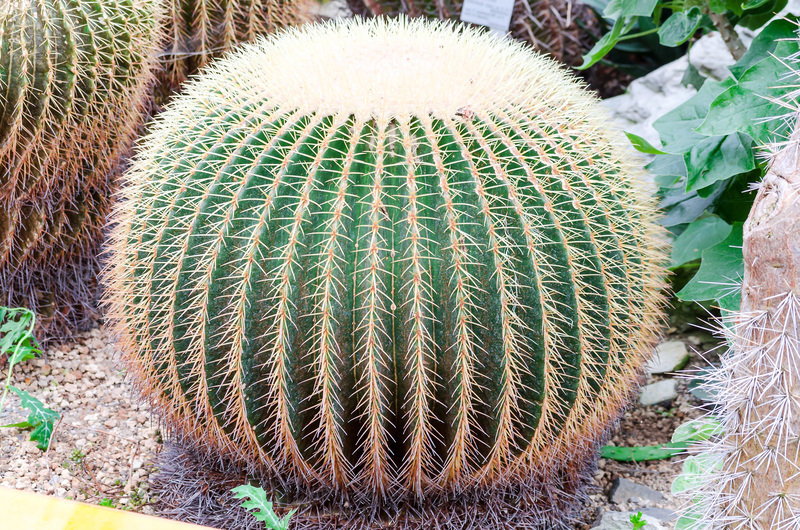Ensure your orchids bloom beautifully
Posted on 30/05/2025
How to Ensure Your Orchids Bloom Beautifully: The Complete Guide
Orchids are among the most stunning and exotic houseplants, cherished for their vibrant and long-lasting blooms. However, many orchid enthusiasts often find themselves frustrated, asking, "Why won't my orchid bloom?" or, "How can I make sure my orchids produce abundant, healthy flowers?"
Ensuring your orchid blooms beautifully isn't just about watering it occasionally; it requires a thoughtful combination of care, environment, and attention to specific orchid needs. In this comprehensive, SEO-optimized article, we'll walk you through every vital step in ensuring your orchid blossoms beautifully year after year.
- Understand Your Orchid's Type and Cycle
- Choose the Right Location and Lighting
- Master Orchid Watering Techniques
- Monitor Humidity and Airflow
- Feed Properly with the Right Fertilizer
- Repot When Necessary
- Prevent and Treat Common Orchid Problems
- Tips to Encourage Re-Blooming
- Troubleshooting: Why Your Orchid Isn't Blooming
- Conclusion
Understanding Your Orchid: Identify & Respect Its Species and Blooming Cycle
Every orchid species is unique. While Phalaenopsis (Moth Orchid) is one of the most common and beginner-friendly orchids, thousands of species and hybrids exist. Properly identifying your orchid is the first critical step in ensuring successful and beautiful blooms. Each type may require distinct care in terms of light, temperature, and water.
Common Types of Orchids
- Phalaenopsis: Prefers indirect light, frequent blooms, easy for beginners.
- Cattleya: Gorgeous, fragrant flowers, needs bright light.
- Dendrobium: Diverse, many need a drier winter rest.
- Oncidium: Likes lots of filtered sunlight and regular feeding.
- Paphiopedilum: Lady's slipper orchids; tolerate lower light.
Know Your Orchid's Bloom Cycle
Understanding when your orchid naturally blooms helps you match care routines to growth and rest periods, ensuring maximum flower production and longevity.
Ensure Optimal Light: Position Your Orchid for Beautiful Blooms
One of the keys to successful orchid blooming is providing the right amount and type of light. Most orchids don't thrive in direct sunlight, which can scorch their leaves; however, too little light can cause an orchid to refuse to bloom.
How to Assess Light Needs
- Phalaenopsis orchids: Need bright, indirect sunlight. An east or west-facing window with sheer curtains is ideal.
- Cattleya and Oncidium: Prefer brighter, filtered light. A south-facing window with some protection from midday sun is best.
Leaf color reveals if your orchid is getting the right light:
- Bright green: Perfect amount of light.
- Dark green: Not enough light; likely won't bloom.
- Yellowish green/red spots: Sunburn risk; move to filtered or indirect light.
Remember, artificial LED grow lights are a great supplement if natural light is insufficient.
Watering Your Orchid Properly
Incorrect watering is a primary reason orchids fail to bloom or their flowers wilt prematurely. Both overwatering and underwatering can stress your plant.
Best Watering Practices
- Check before watering: Only water when the potting mix is nearly dry. Stick a finger or skewer 1-2 inches into the media.
- Water thoroughly: Use tepid water to soak the potting mix, allowing water to drain from the bottom.
- Reduce frequency in winter: Orchids need less water when dormant.
- Avoid letting orchids sit in water: Soggy roots = root rot = no blooms.
Different orchids have different water needs--get to know your plant!
Provide the Right Humidity and Ensure Good Airflow
Orchids are tropical plants--they love moist air. Insufficient humidity can lead to shriveled buds and prevent flowering.
Maintaining Ideal Humidity
- Keep room humidity between 40% and 70%; most home environments are drier.
- Use a humidity tray: Fill a shallow tray with pebbles and water beneath your orchid's pot.
- Group plants together: This naturally raises humidity through transpiration.
- Consider a small room humidifier near your orchid display.
Air Movement for Healthy Blooms
Stagnant air encourages pests and fungal disease. Ensure gentle air movement around your orchids:
- Open windows slightly (when it's warm).
- Use a fan on a low setting, ensuring no direct drafts hit the plant.
Fertilize Regularly for Spectacular Orchid Blooms
Orchids are light feeders, but they require the right nutrients to produce flowers. Proper feeding encourages healthy leaves, new growth, and flower spikes.
How to Feed Orchids
- Use specialized orchid fertilizer: A balanced 20-20-20 formula or one higher in phosphorus during bloom seasons.
- "Weekly weakly" rule: Fertilize at 1/4 to 1/2 the recommended strength every 1-2 weeks when actively growing.
- Flush with plain water monthly: Prevents salt build-up, which harms roots and inhibits blooms.
- Pause feeding during winter rest: Most orchids have a dormant period.
Repot Orchids to Promote Healthy Blooms
Repotting your orchid isn't just about aesthetics. Over time, orchid potting mix breaks down, holding too much water and suffocating roots--a top cause of bloom failures.
When and How to Repot
- Every 1-2 years, or when you notice roots crowding or poking from the pot.
- Use fresh orchid bark mix--never regular soil.
- Repot after flowering to reduce bloom loss.
- Remove any dead/damaged roots before replanting.
Repotting helps rejuvenate your orchid and boost the chances of future spectacular blooms.
Prevent and Address Common Orchid Problems
Knowing how to troubleshoot common orchid issues is crucial for continuous, beautiful blooms.
Common Bloom-Blocking Problems
- Root Rot: Too much or stagnant water. Roots appear brown, mushy. Solution: Repot, trim damaged roots.
- Pests: Look for mealybugs, scale, spider mites, or aphids. Wipe leaves or use mild insecticidal soap.
- Bud Blast: Sudden bud drop can result from drafts, drastic temperature changes, or repotting shock.
- Leaf Spot or Yellowing: Often caused by overwatering or insufficient light.
Regular inspection and prompt action can save future blooms.
How to Encourage Your Orchid to Re-Bloom
Wondering, "How can I get my orchid to flower again?" With the right care, most orchid varieties, especially Phalaenopsis, can bloom multiple times a year.
Re-Blooming Strategies
- Mimic natural conditions: In nature, a drop in nighttime temperatures signals orchids to bloom. Move your plant to a cooler room (55-65?F/13-18?C at night for 2-4 weeks).
- Cut old spikes: For Phalaenopsis, cut above a visible node to stimulate side spike growth. For others, cut to base when spent.
- Revert to regular feeding and light regimens: As soon as new spikes form, resume frequent fertilizing and proper lighting.
Orchid Not Blooming? Troubleshooting Tips for Gorgeous Flowers
Is your orchid healthy but refusing to bloom? This is one of the most common frustrations among orchid lovers. Here are seven troubleshooting steps to ensure your orchid's next bloom is its most beautiful yet:
- Check the light: Is your orchid leaf dark or lime green? Move to a brighter location or supplement with grow lights.
- Review watering habits: Too much or too little is equally harmful. Adjust frequency based on pot size, season, and orchid type.
- Evaluate temperature: Most orchids need a drop of 10?F (5?C) between day and night to stimulate blooming.
- Inspect the roots: Healthy roots are plump and white or green when wet--rotting roots need immediate attention.
- Check for pests or disease: Eliminate bugs and trim any affected leaves or roots.
- Assess fertilizer regime: Add a monthly high-phosphorous bloom booster if regular feeding isn't working.
- Consider the age of the plant: Immature orchids may take years to bloom. Patience is key!
Conclusion: Enjoy Beautiful Blooms from Your Orchids Year After Year
Ensuring your orchids bloom beautifully is as much an art as it is a science. By understanding your orchid's unique needs--adequate light, proper watering, the right humidity, regular feeding, timely repotting, and attentive problem-solving--you'll enjoy spectacular flowers and a thriving, healthy orchid plant for years to come.
Be observant, patient, and proactive. Your reward? An orchid that blooms beautifully, brightening your home with its elegance and delicate charm every season.
Happy Growing!
If you have more questions about orchids, or want to share tips for ensuring orchids bloom beautifully, leave a comment below or join our orchid care community online!



